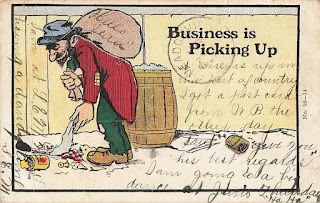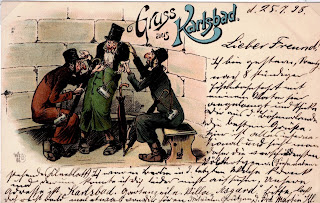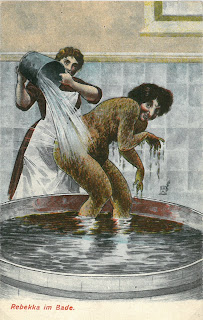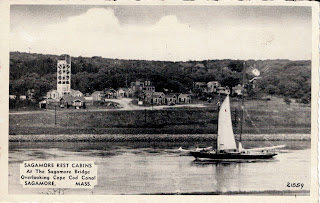Hotel Kölner Hof printed a series of cards. It prided itself on being a hotel without Jews. Read about it here.
This postcard depicts the arrival of a Jewish caravan from the desert. The text says:
Artist:
Publisher: Kolner Hof
Printer:
Printing Process: Chromolithography
Date: circa 1900
This postcard depicts the arrival of a Jewish caravan from the desert. The text says:
Moses You acted badly when God gave you power. You mistreated the great people for 40 years at Sinai. Without shelter, you led them around like rabbits, with your beautiful noses, so that they all became crooked. But these evil deeds have taken revenge on you, God the Father then said to you: You must die, evil one, (real"! (Continuation Card No. 2)
Artist:
Publisher: Kolner Hof
Printer:
Printing Process: Chromolithography
Date: circa 1900
Rarity: ☝☝☝ ☝
Expensive but does appear in auctions
#postcards #stereotype #Unwelcome #kolner_Hof
























